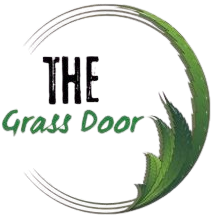Delta-8 THC and Delta-9 THC come from the weed sativa plant, which regularly contains more than 100 cannabinoids or dynamic constituents. However, while the plant contains tremendous proportions of delta-9 THC, it contains close to no delta-8 THC, a minor cannabinoid.
Depending upon the quality, sum, and various factors, both delta-8 THC and delta-9 THC can make intoxicatingly psychoactive outcomes or a “high.” regardless of their similarities, delta-8 THC and delta-9 THC moreover have huge differences you should understand preceding consuming either substance.
Peruse on to dive deeper into delta-8 THC and delta-9 THC, their similarities and contrasts, possible dangers and advantages, and that’s just the beginning.
What is Delta-8 THC?
Since pot sativa contains only a humble amount of delta-8 THC, it’s usually made in concentrated totals from hemp-decided cannabidiol (CBD). While CBD has no intoxicating effects, delta-8 THC has equivalent psychoactive properties to delta-9 THC, regardless of the way that it is all around less severe than delta-9.
Delta-8 THC things are available in many designs, including CBD chewy confections, chocolate and various desserts, treats, colors, vaping cartridges, saturated refreshments, and even breakfast oats.
A couple of producers market delta-8 THC things as treatments or answers for illnesses; regardless, the Food and Drug Administration (FDA) has neither surveyed nor upheld these cases. In actuality, in May 2022, the FDA gave advised letters to five creators of delta-8 THC things for dismissing the Public authority Food, Medicine, and Remedial Showing.
The admonition letters address misbranding, such as not giving satisfactory guidelines for utilization, unlawfully promoting items as therapies for ailments or other therapeutic purposes, and adding delta-8 THC to food varieties, like chewy candies, chocolate, and other consumables.
What is Delta-9 THC?
Delta-9 THC is the major commonly occurring inebriating part of the marijuana plant. When consumers are smoking Delta-9 THC past a specific limit, they usually experience a “high.”
In states where delta-9 THC is lawful, certified cannabis dispensaries offer delta-9 THC items in many structures, including chewy candies, treats, confections, implanted refreshments, colors, vaping cartridges, skin moisturizers, and pre-rolled “joints.”
It has been studied that a few Delta-9 THC-infused products are able to successfully treat symptoms of certain medical conditions. However, the FDA has approved only two of the THC-infused formulas- dronabinol and nabilone. They are used to alleviate chemotherapy-induced nausea and vomiting.
Possible health benefits of Delta-8 THC
To understand the possible health benefits of Delta 8, we will have to consider some of these understated situations:
- All mixtures/constituents being consumed
- The portion consumed
- The recurrence of consumption
- The technique for organization
- The nature of creation (development, extraction, and definition for weed items)
- The socioeconomics and well-being status of the individual consuming
So, likely advantages of delta-8 THC might include:
- Relief from discomfort
- Improved sleeping cycle
- Increased hunger
- Tangible overstimulation anticipation
- Diminished irritation
Possible health benefits of Delta-9 THC
Possible advantages of consuming delta-9 THC might include:
- Relaxation
- Diminished anxiety
- Expanded hunger
- Sensations of bliss or thrill
- Elevated creative mind
- Improved sensory perception
Multiple studies have shown promising results in the usage of Delta-9 THC that it can provide therapeutic abilities and can assist in treating patients with sleeping disorders, nausea, bodily discomforts, migraine, etc.
While we don’t have conclusive evidence that delta-9 THC or other cannabinoids are [the] clear justification behind the impacts, patients in organized clinical marijuana programs more than once show benefits in the circumstances referenced previously. Likewise, [benefits are found in individuals with] wretchedness, uneasiness, Post Traumatic Stress Disorder (PTSD), neurodegenerative problems, seizures, chemical imbalance, and immune system illnesses, to give some examples.
Research on long-haul utilization of delta-9 THC and its consequences for rest is restricted, for certain examinations showing improvement in rest examples and others demonstrating that constant delta-9 THC use can make the contrary difference, disturbing rest and postponing rest beginning.
Delta-8 vs Delta-9: Differences & Similarities
Both delta-8 THC and delta-9 THC are made of similar arrangements of components (carbon, hydrogen, and oxygen), just varying somewhat in how those components are organized. Although comparably created, delta-8 THC and delta-9 THC show numerous distinctions.
Differences
Delta-9 THC has been read up broadly for almost 60 years. However, little exploration is distributed on delta-8 THC, says Dr. Gordon. Another significant distinction is how they are (or alternately aren’t) managed.
Delta-9 THC is profoundly directed in states where legitimization measures have passed with explicit standards on testing, extricating, and marking. However, various producers of delta-8 THC products aren’t observing express rules. For example, they may not ensure their products are free from debasements or that the completed outcome contains definitively precise things communicated on the imprint.
Intensity is one more contrast between delta-8 THC and delta-9 THC. Multiple studies have suggested that delta-8 THC would be around one-quarter to 33% less intense than a comparable measure of delta-9 THC.
Delta-9 THC can be smoked or crumbled in sprout (bud) structure without requiring extraction, notwithstanding the way that edibles, topicals, and various game plans, truth be told, do require an extraction cycle. Then again, practically all delta-8 THC items are incorporated, separated, and cleaned from marijuana-obtained CBD.
Similarities
Delta-8 THC and delta-9 THC can deliver the positive or unfriendly results referenced above since both actuate the body’s CB1 and CB2 cannabinoid receptors, remembering those for the focal sensory system.
Initiating CB1 receptors can lessen body pain, assist with regular sleep cycles, relax the nervous system, improve appetite, and so on. Actuating CB2 receptors quiet an overactive, insusceptible framework and diminish irritation, the two of which are significant to working on numerous constant circumstances.
Meanwhile, overconsumption of Delta-8 and Delta-9 can cause the CB1 receptors to overstimulate, resulting in extreme lethargy, nausea, decreased appetite, insomnia, etc.




